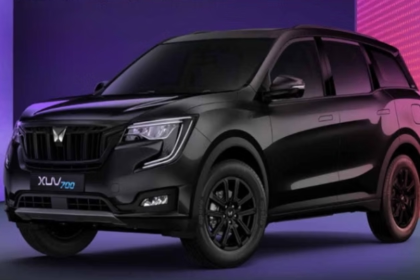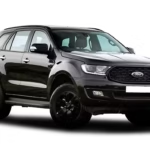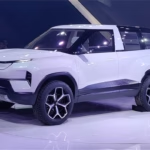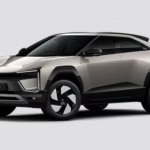Introduction: The Rise of the ‘New Force’
Force Motors. Its vehicles weren’t built for luxury; they were built for a purpose: to carry soldiers, students, goods, and dreams across the breadth and length of this country. But now, that familiar roar is fading, replaced by a new sound: the quiet hum of electricity.
- Legacy of Strength: From Diesel Titans to Electric Dreams
- Why Force Motors Needs 2.0
- Inside Force Motors’ Electric Strategy
- The Traveller EV: Symbol of the New Era
- Engineering for India
- Competing in the New Electric Battlefield
- Charging Infrastructure & Partnerships
- The Road to 2030: Electrifying Every Segment
EV Shift — When All Became Electric
- Force Motors, long celebrated for its diesel legacy, from Trax Cruisers to Traveller vans, is about to embark on a decisive new chapter.
- The company that once defined India’s rugged utility transport is now re-engineering its DNA for the electric age.
- With global emission norms tightening and India’s EV policy gaining momentum, Force Motors recognises the writing on the wall: adapt or become a relic of the past.
- The leadership of the brand has embarked on an all-electric roadmap, starting with its most iconic commercial platform: the Traveller EV.
- It represents a change not only of fuel but also of philosophy-from mechanical muscle to smart mobility, from torque to technology.
Legacy of Strength: From Diesel Titans to Electric Dreams
Before Force Motors decided to chase electrons, it had built an empire on diesel and dependability.
Diesel Legacy: The Backbone of India’s Mobility
- The roots of Reliability: Founded in 1958, Force Motors has pioneered affordable, durable vehicles that could survive India’s most inhospitable roads.
- From Army to Agriculture: Its products served everywhere-military convoys, school fleets, rural ambulances, and city logistics.
- The Traveller Phenomenon: The Force Traveller, launched in the late 1980s, became a transport revolution-the common van for schools, hotels, and inter-city routes.
- Trax and Gurkha Lineage: These vehicles were designed for rural and off-road conditions, drawing a cult following among users who valued raw strength over refinement.
- Diesel Dominance: Powered by Mercedes-Benz-derived engines, Force came to stand for torque, toughness, and trust—the three Ts of utility transport.
The Turning Point: When the World Began to Change
- The Global EV Shift: As the world turned toward sustainability, even the most diesel-committed manufacturers started to go silent, literally.
- India’s Push for Clean Mobility: The government’s initiative of FAME II, rising fuel prices, and stringent emission norms of BS6 Phase 2 have marked the end of the diesel era.
- Market Reality Check: Commercial buyers are now requesting low-cost, low-maintenance electric alternatives—a threat to legacy diesel builders like Force.
- Technology Gap: Unlike passenger car brands, the strength of Force Motors had been in engineering hardware, not software, and the EV world required both.
- The Wake-Up Call: Every year, rivals ranging from Tata Motors and Mahindra to new-age EV startups gained ground in the EV sector, compelling Force Motors to recalibrate its future.
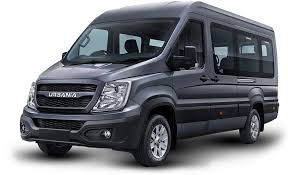 The Shift in Vision — From Power to Purpose
The Shift in Vision — From Power to Purpose
- The company realized its identity wasn’t just “diesel”; it was dependability, and that’s a value that could endure, regardless of the fuel source.
- The result was a fundamental strategic pivot: to take its century-old engineering base and infuse it with electric intelligence.
- The idea: keep the body, reinvent the soul.
- Force Motors would no longer be defined by combustion but by capability, connectivity, and clean energy.
- Thus, the foundation was laid for Force Motors 2.0-the silent revolution.
Why Force Motors Needs 2.0
Every legacy automaker reaches its reckoning, the point at which history collides with disruption. For Force Motors, that time is now. The world, once ruled by diesel power, is transforming into one driven by data, design, and decarbonization. The same roads where the Force Traveller once thundered are now demanding silence, speed, and sustainability. If Force is to survive through the next decade, it doesn’t need to adapt merely, but needs to redefine what it stands for.
The Global EV Revolution: A Changing Automotive Order
- Throughout the world, the automobile is undergoing its most dramatic transition since its invention—the shift from combustion to electric.
- From Europe’s 2035 ban on diesel engines to India’s 2030 EV adoption goals, nations are setting deadlines for phasing out diesel engines.
- Global manufacturers such as Mercedes-Benz, Ford, and Toyota are remodelling their lineups around electricity, autonomy, and smart connectivity.
- In this new era, success is no longer measured in horsepower but in kilowatts, connectivity, and carbon reduction.
- For a diesel-dominant brand like Force Motors, the old blueprint no longer works; the future requires a new one.
The Domestic Pressure: India’s Silent but Swift EV Push
- The government of India is pushing for EV penetration across every segment, from scooters to buses.
- Subsidies provided by FAME II, state-level incentives, and tax breaks favour electric fleets.
- Cities like Delhi, Pune, and Bengaluru are enacting zero-emission public transport policies- a direct opportunity for Force’s commercial EVs.
- Major clients, ranging from corporate shuttle services to government transport boards, are demanding electric options in bulk.
- This means the battle is no longer “if” Force Motors will go electric, it’s “how fast” it can make the shift.
The Competitive Reality — New Players, New Threats
- The Indian EV market is becoming increasingly crowded, with Tata Motors leading the fleet segment, Mahindra investing in last-mile EVs, and startups such as Euler Motors, Altigreen, and Omega Seiki revolutionizing the economics of commercial transport.
- These newer brands are agile, software-driven, and subsidy-savvy — just the areas where Force Motors lags.
- The company’s traditional image as a “diesel fleet maker” risks alienating younger buyers and green investors.
- Not even the strong dealer network can compete without a modern product line and digital integration.
- Force Motors 2.0, in that sense, is less a business decision than a survival instinct.
The Purpose Behind Reinvention: From Legacy to Longevity
- Force Motors has always stood for reliability, ruggedness, and reach — qualities that remain timeless.
- The challenge is translating those strengths into the EV era without losing identity.
- Its focus is now on building electric vehicles that can withstand Indian conditions, including bad roads, extreme heat, and long-duty cycles.
Inside Force Motors’ Electric Strategy
At Force Motors’ R&D facilities in Pune and Madhya Pradesh, a quiet revolution is taking shape. It is a ground-up transformation. Force Motors is preparing to electrify not just its fleet but its very philosophy.
The Master Plan — Electrify the Backbone First
- Therefore, Force Motors’ foray into the EV world starts with what it is strongest at-commercial and institutional vehicles.
- Instead of chasing premium SUVs or passenger cars, the company is focused on mass-mobility EVs, such as school vans, staff shuttles, and public transport fleets.
- The logic is strategic in the sense that commercial buyers value durability, uptime, and cost efficiency—three pillars that Force already dominates.
- By converting its proven platforms, such as the Traveller and Trax, into electric variants, Force reduces risk while modernizing its lineup.
- This bottom-up approach has the advantage of making the brand transition organically from diesel to electric, without disrupting its core market.
The Traveller EV: A Symbol of Reinvention
- The company’s first major EV project is the Force Traveller Electric, which has already been spotted in prototype testing.
- It is designed as a zero-emission shuttle, targeting school buses, corporate fleets, and airport transport services.
Expected specs (based on internal estimates and testing leaks):
- Range: 250–300 km per charge (real-world)
- Battery Pack: 60–80 kWh lithium-ion
- Charging Time: Approx. 90 minutes (DC fast charge)
- Top Speed: 80–100 km/h (optimized for city and intercity duty)
- The Traveller EV will retain its trademark rugged chassis, but will also feature smart fleet connectivity for route optimization and diagnostics.
- This vehicle isn’t just an electric version; it is a signal that Force Motors is finally stepping into the clean mobility age.
The Electric Architecture — Modular, Scalable, Sustainable
- It is developing a new modular electric vehicle platform suitable for use in light vans to heavy commercial vehicles.
- It uses a ladder-frame chassis modified for battery placement, ensuring safety and stability even on uneven Indian terrains.
- Locally sourced batteries and motors help keep costs competitive and meet the ‘Make in India’ mandate.
- While its engineers are busy perfecting thermal management systems that would keep it performing in tropical heat.
- By using standardized battery modules, Force aims for easy servicing and faster scalability across its fleet.
The Traveller EV: Symbol of the New Era
The Traveller has always been more than a mere van; it’s a symbol of Indian mobility itself: the Force Traveller EV is the flagbearer of Force Motors 2.0.
The Legacy Lives On — But the Engine Doesn’t
- It’s built on the same tried-and-tested frame that made its diesel ancestor an icon, but everything under the skin has undergone significant changes.
- Replacing its turbo-diesel heart is a high-torque electric motor that gives instant acceleration, yet with zero tailpipe emissions.
- The shift is at once symbolic and strategic: retaining the familiar design ensures continued trust among institutional buyers, while introducing them to new technology.
- It’s Force Motors’ way of saying-we’re evolving, not abandoning.
- The Traveller EV retains the soul of the classic and replaces its noise with intelligence.
Powertrain & Performance — Built for Real India
- It will also be powered by a permanent magnet synchronous motor, specifically tuned to deliver high torque at low speeds, making it ideal for city and intercity operations.
- Battery pack: An estimated 60–80 kWh lithium-ion unit, developed in conjunction with local partners, for heat and vibration resistance.
- Range: approximately 250–300 km per charge, optimized for daily commercial use.
- Charging: DC fast charging up to 60 kW — 0 to 80% in under 90 minutes.
- Smooth, vibration-free drive quality with near silence — the trait turning the Traveller from a workhorse to a whisper.
- Maintenance: The operational cost is 40% lower compared with its diesel version, a major attraction for fleet owners.
DESIGNED FOR THE NEW AGE FLEET MARKET
- Target customers include schools, corporate fleets, hospitality groups, state transport boards, and airport operators.
- Optional configurations include 9-seater, 12-seater, 17-seater, and shuttle variants.
- Equipped with smart telematics, real-time range data, and geo-fencing features for fleet management.
- Safety-first approach: regenerative braking, dual airbags, and ABS + EBD for modern compliance.
- The Traveller EV represents a clear shift in the brand tone of Force Motors, from utility to usability, from transport to technology.
The Symbolism — From Roar to Whisper
- This diesel Traveller roared through decades of Indian highways; its electric successor moves with purpose and poise.
- The contrast captures all of Force Motors’ transformation—from raw mechanical strength to refined electric intelligence in one frame.
- This van isn’t just another vehicle but a message on wheels-that Indian engineering can evolve without losing its roots.
- With every silent kilometre that the Traveller EV travels, it carries a legacy and a promise: the force that powered India once will power it again—cleaner, smarter.
The Emotional Pulse – Trust Reinvented
- For decades, institutions bought the Traveller without hesitation-because it worked. It didn’t break, it didn’t complain, it just delivered.
- Now, the same trust is being carried into a new dimension: electricity.
- While introducing innovation, Force Motors has assured its customers of reliability, so this is not an experiment but the future built on faith.
- You don’t hear the end of diesel in the silence of the Traveller EV. You hear the beginning of destiny.
Engineering for India
Building an electric vehicle for India is not about substituting fuel with batteries; it’s about surviving chaos: roads that become rivers, heat that melts metal, loads that break suspensions, and traffic that tests patience. For Force Motors, this is familiar territory.
Power Meets Purpose — Load and Range Balance
- With the Traveller EV design, it’s assured that it can carry up to 17 passengers or its equivalent in cargo load without major range penalties.
- Dual-motor configurations are being developed for hilly or heavy-duty applications, ensuring consistent torque output even at full load.
- The engineers at Force focus on intelligent torque vectoring and regenerative braking to maximize battery efficiency in stop-and-go city conditions.
- Fleet software will dynamically calculate the range predictions, factoring in passenger load and route elevation.
- The result: an EV that performs like a workhorse, not a lab prototype.
Indigenous Engineering — Made by India, for India
- 90% of Force’s EV components are being localized, from chassis to wiring harnesses, which reduces its import dependency.
- Core R&D is housed in Akurdi (Pune) and Pithampur, where teams specialise in battery integration, telematics, and powertrain optimisation.
- The company is also engaging with Indian startups and universities for AI-based diagnostics and predictive maintenance algorithms.
- This will facilitate lower costs, quicker serviceability, and national self-reliance, aligning with the Make in India and Atmanirbhar Bharat initiatives.
- Force Motors isn’t just making EVs in India; it’s making India ready for EVs.
Built to Last, Built to Lead
- Testing protocols for EVs at Force are similar to those for military and commercial standards, including vibration, corrosion, altitude, and dust endurance tests.
- The company engineers the battery enclosure from reinforced aluminium to prevent physical impacts and water intrusion.
- Real-world validation runs are underway across Leh, Rajasthan, and coastal regions to verify the consistency of performance.
- This is not a foreign blueprint adapted for India but an Indian blueprint built for the world. When Force Motors says its EVs are “engineered for India,” it isn’t a tagline; it is a legacy continued in volts.
Competing in the New Electric Battlefield
The Indian EV market is home to legacy giants, such as Tata Motors and Mahindra, as well as agile newcomers like Euler, Altigreen, and Omega Seiki. And now, entering this electric war with decades of diesel dominance behind it, is Force Motors: the veteran reborn, ready to reclaim its territory in silence.
The Rivals — Old Allies, New Adversaries
- Tata Motors dominates India’s commercial EV space with models such as the Winger EV and the Ace EV, backed by strong government contracts and fleet partnerships.
- Mahindra Electric has tapped its various EV experiments (e2o, Treo) to expand into logistics and cargo segments.
- Ashok Leyland has unveiled Switch Mobility, its dedicated EV arm, which will focus on targeting buses and trucks.
- Startups such as Euler Motors, Altigreen, and Omega Seiki are rewriting the cost models with ultra-efficient, data-driven fleets.
- Each of these brands represents a different type of threat that is faster, younger, and fully digital first.
- The challenge for Force Motors is not entry, but evolution under pressure.
Force Motors’ Strength: The Diesel DNA that Still Matters
- Where others chase headlines, Force Motors carries decades of trust in fleet and institutional mobility.
- Its nationwide network of services, which is already built for rugged operations, gives it a huge head start in EV aftersales support.
- It has an unrivalled depth of engineering in chassis, drivetrain, and vehicle durability within the commercial segment.
- For fleet owners, Force vehicles are known as low-maintenance, high-endurance machines- a legacy advantage that not many EV startups can replicate overnight.
- The mission, now, is simple: merge this reliability with new-age electric intelligence.
The Weakness: Late Entry, Early Lessons
- Force Motors is a late entrant into the EV sector, giving its rivals an early market lead.
- The organisation must transition from being hardware-oriented to software-driven, mastering telematics, data analytics, and battery management systems.
- A brand image still associated with diesel and utility needs a modern makeover to attract tech-savvy investors and newer, more youthful clients.
- Competing with government-backed and investor-funded rivals requires agility, effective storytelling, and engineering expertise.
- In other words, Force Motors needs to learn how to move not just vehicles but minds.
The Opportunity: The Segment Nobody Owns Yet
- Despite the buzz, the commercial EV fleet segment, especially mid-size passenger carriers, remains largely untapped.
- The strong positioning of Force in institutional transport, such as schools, offices, and government fleets, provides it with direct access to the emerging demand.
- The Traveller EV could easily become India’s first mass-market electric shuttle, filling the gap between luxury buses and e-rickshaws.
- As India’s cities electrify their public and corporate transport, Force can position itself as the trusted, scalable EV solution.
- It’s not chasing personal car buyers; it’s targeting the backbone of Indian mobility, where real change begins.
The Battle Plan: Silent, Strategic, and Sustainable
- Focus on fleet electrification, not consumer marketing; that is where predictable growth and bulk orders are.
- Gradual rollout: Traveller EV is planned for the years 2025–26, followed by Trax Electric and Gurkha EV for niche/off-road markets.
- Strengthen the infrastructure for EVs through partnerships with logistics companies, charging operators, and government agencies.
- Introduce EV service certifications for technicians across its 200+ service centres to achieve long-term readiness for maintenance.
- Build brand identity around “Reliability, Reinvented” by connecting its diesel legacy to its electric future.
The Tone of the Battlefield – Old Power versus New Pulse
- The EV war in India is not just a technological battle; it is also an emotional one. It’s heritage pitted against innovation, trust against novelty.
- Enter Force Motors, the veteran with scars and stories to tell-not flashy but formidable.
- In an age of markets obsessed with startups, it represents stability —the quiet, constant amidst the electric noise.
- The coming decade will decide whether legacy can adapt faster than disruption. And when the engines finally fall silent, one truth will resound: in this new battlefield, the loudest victory will be that of the quietest machine.
Charging Infrastructure & Partnerships
An electric vehicle is only as strong as the network that feeds it. Batteries may drive the machine, but charging drives the movement. Force Motors knows this truth well. To electrify India’s mobility, building vehicles is not enough; one needs to build an ecosystem around them. Behind every silent Force EV that will glide through Indian cities, a new web of chargers, depots, and data lines will hum, quite rewriting the country’s mobility map.
The Backbone Will be Built-Depot-based Charging First
- The near-term EV strategy for Force Motors focuses on fleet depots and institutional charging hubs, rather than scattered public stations.
- Most of its early clients—schools, corporations, and government fleets—operate from fixed locations with predictable routes.
- The company is setting up dedicated charging yards at the client facilities, designed for overnight slow charging and midday fast charging.
- It ensures high uptime, low range anxiety, and operational costs within control.
- It’s a practical, Indian-first approach: build where the vehicles live, not where they might go.
The Partnership Network: A Common Building, A Common Growth
- Force Motors is creating alliances along the entire EV value chain to drive adoption faster:
- Battery & Powertrain Partners: Working with domestic and global suppliers for modular lithium-ion packs and efficient motors.
- Charging Infrastructure Providers: Collaboration with companies such as Tata Power, Exicom, and ChargeZone on turnkey charging solutions.
- Software Integrators: Partnering with telematics and AI firms for smart charging schedules, energy optimization, and remote diagnostics.
- Fleet Operators & Logistics Firms: Joint pilot programs to deploy Traveller EVs across IT parks, airports, and government transport fleets.
- Each of these partnerships represents a layer in the new identity of Force Motors: not just as a vehicle builder, but as a creator of a mobility ecosystem.
Government Alignment — Riding the Policy Wave
- Force Motors’ EV plan is closely aligned with India’s FAME-II and the National Electric Mobility Mission (NEMMP).
- With a focus on commercial passenger EVs, it qualifies for higher incentive slabs and also enjoys GST benefits.
- The company is also in discussions with state transport undertakings (STUs) in Maharashtra, Karnataka and Delhi for electric bus and van tenders.
- Force’s local manufacturing and supply chain strength give it an edge when it comes to meeting localization criteria under these schemes.
- This synergy of policy support + product readiness is key to its early success in the EV transition.
Smart Charging & Telematics — Data as the New Diesel
- It will also develop a cloud-connected fleet management system that integrates data related to vehicles, chargers, and operators in real-time.
- Among many other benefits, fleet owners can track battery health, route efficiency, idle time, and charging costs from a single, comprehensive dashboard.
- AI-based algorithms will recommend optimal charging windows to reduce electricity expenses and grid strain.
- Predictive analytics will flag potential component wear before it becomes a breakdown, dramatically reducing downtime.
- It transforms the brand from an automobile hardware brand to a data-driven mobility intelligence company.
The Long Game — Powering the Nation, One Fleet at a Time
- Force isn’t following consumer EV trends, it’s building the foundations – slow, steady, strategic.
- By tying its vehicles to a robust, local charging grid, it’s ensuring operational reliability for many years to come.
- The company envisions EV corridors, connecting urban centres with rural areas through charging partnerships along main routes.
The Road to 2030: Electrifying Every Segment
It will be different by 2030: quieter, cleaner, and smarter. Somewhere between those new-age highways and narrow village trails, the emblem of Force Motors will continue to move, but transformed. What was once a symbol of diesel grit will be a mark of electric endurance. For Force, 2030 isn’t just a deadline, but a declaration—a promise that every segment it has ever served will be reborn, charged with new life.
Redesign the urban fleet: phase 1, 2025–2026
- The immediate focus is on the Traveller EV and Trax EV, two pillars that built Force’s reputation.
- Traveller EVs will focus on corporate shuttle fleets, school buses, and airport transit, with a design offering a real-world range of 250–300 km.
- The Trax EV will feature a specific variant designed for rural mobility, government schemes, and e-taxi applications, offering rugged suspension and modular battery options.
- FORCE strives to be India’s preferred brand for electric fleets among fixed-route, high-utilization operators.
- Initial production target: 10,000 EV units annually by 2026, scaling up according to demand.
Phase 2 (2027–2028): Expanding to Logistics and Utility EVs
- Force Motors is planning to extend electrification to its commercial load carriers and multi-utility platforms.
- It includes electric mini-trucks and cargo vans, destined for urban logistics and built to compete with the Tata Ace EV and the Mahindra Zor Grand.
- The cars will be designed for optimal power efficiency, feature swappable batteries, and include connected telematics to track deliveries in real-time.
- The company is also working on hydrogen fuel-cell range extenders for long-haul commercial EVs with various global suppliers.
- This phase will mark the entry of Force into India’s booming last-mile delivery ecosystem, where reliability meets electrification.
Phase 3 (2028–2030): Electrification of Public Mobility
- As India’s cities are expanding their public transport networks, Force plans to electrify its larger passenger mobility segment.
- Already in development is a prototype of the Traveller XL EV Bus, capable of seating 30+ passengers with a range of 350 km.
- It will also provide custom-built electric vehicle platforms for metro feeder routes, e-shuttle services, and inter-city shared transport.
- Collaborations with state transport boards and private operators will also drive adoption in Tier 1 and Tier 2 cities.
- By 2030, it aims to have a completely zero-emission passenger portfolio, from 6-seaters to 40-seaters.
Conclusion: The Reinvention of a Legend
The force engine was the sound of India on the move, more powerful: a purpose. Force Motors isn’t just leaping into electric; it’s rediscovering its soul. What once moved goods and people will now move a generation toward a new kind of mobility, defined by silence, sustainability, and strength.
From Diesel Legacy to Digital Destiny
- The transformation of Force Motors is more than technological — it’s symbolic.
- A company born in the age of mechanical grit now enters the era of digital intelligence and green engineering.
- The same DNA that built India’s hardest-working vehicles is being reprogrammed for the EV world, without losing its essence.
- Its rugged frames now hold lithium hearts, and its old-school reliability meets real-time connectivity.
- Force Motors 2.0 isn’t erasing its past; it’s electrifying it.
The Pulse of Progress — India’s Roads, Reinvented
- Every generation has its engine. In the past, it was diesel. Today, it’s data and design.
- At Force Motors, the understanding is that the future of transport isn’t about motion alone but about meaning.
- As India moves towards a $ 100 billion EV economy, the change at Force reflects a deeper shift: from survival to significance.
- Whether it be a school bus in Pune, an airport shuttle in Delhi, or a cargo van in Chennai, the next Force will not just carry passengers; it will carry possibility.
The Cinematic Closing — The Charge Within
- A silent highway, and above it, the night sky hums. A Force Traveller EV glides past, its headlights cutting through the mist. No engine noise, no trail of exhaust. Just motion-pure, electric.
- Somewhere within that silence is the story of a company that refused to be left behind. A company that once powered India’s roads. And now, powers its revolution.
FAQs
Q1. What is Force Motors 2.0?
A: Force Motors 2.0 is the major transformation of the company-a complete leap from diesel-based utility vehicles to next-generation electric and connected mobility platforms. This will focus on electrifying its flagship models, the Traveller and the Trax, modernizing design, and building EV-specific infrastructure across India.
Q2. When will Force Motors launch its first electric vehicle in India?
A: The company is targeting a 2025 launch window, starting with pilot programs for corporate and institutional fleets in select Indian cities. Full-scale commercial rollout will follow shortly after successful field validation.
Q3. What type of charging arrangement will Force Motors EVs employ?
Q: Force Motors plans to deploy depot-based charging infrastructure that will combine overnight slow chargers with fast charging hubs at the fleet depots. It will scale these networks nationally through partnerships with companies like Tata Power and ChargeZone.
Q4. Would Force Motors’ electric vehicles be more affordable compared to those of rivals Tata and Mahindra?
A: Force aims to keep TCO lower through durable engineering, local sourcing, and government subsidies under the FAME-II scheme, while pricing will depend on the battery configuration and incentives.
Q5. Is Force Motors also working on hydrogen or hybrid models?
A: Yes, Force Motors works on hydrogen fuel-cell range extenders and hybrid-electric drivetrains for heavy-duty commercial applications as part of the long-term R&D roadmap. Long-haul and off-road usage are what the company is looking at.
Q6. How is Force Motors preparing its workforce and service network for EVs?
A: The company is retraining engineers, mechanics, and dealers in EV safety, battery diagnostics, and digital maintenance systems. It is also upgrading service centres with high-voltage equipment and telematics tools.
Q7. Will the Force Motors EVs be manufactured in India?
A: Of course, Force Motors is leveraging its Pune and Pithampur facilities for domestic EV production to ensure that it adheres to the government’s “Make in India” and localization mandate to be cost-effective and independent in the supply chain.
Q10. What is Force Motors’ long-term ambition for 2030?
A: Force Motors plans to have a fully electric portfolio across passenger, commercial, and utility segments by 2030, positioning itself as the “Backbone of Electric Bharat” — an Indian brand built to electrify India’s roads, cities, and communities.

